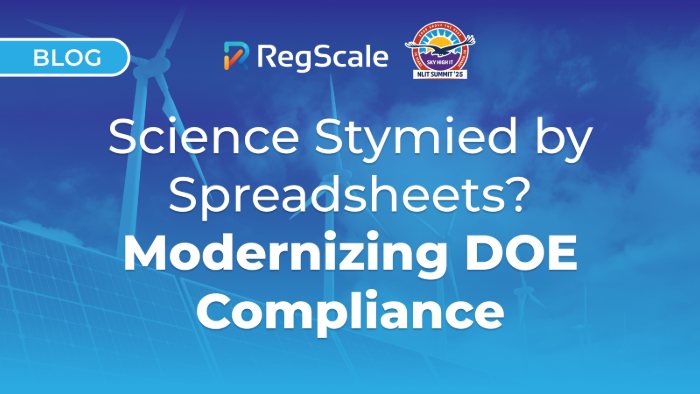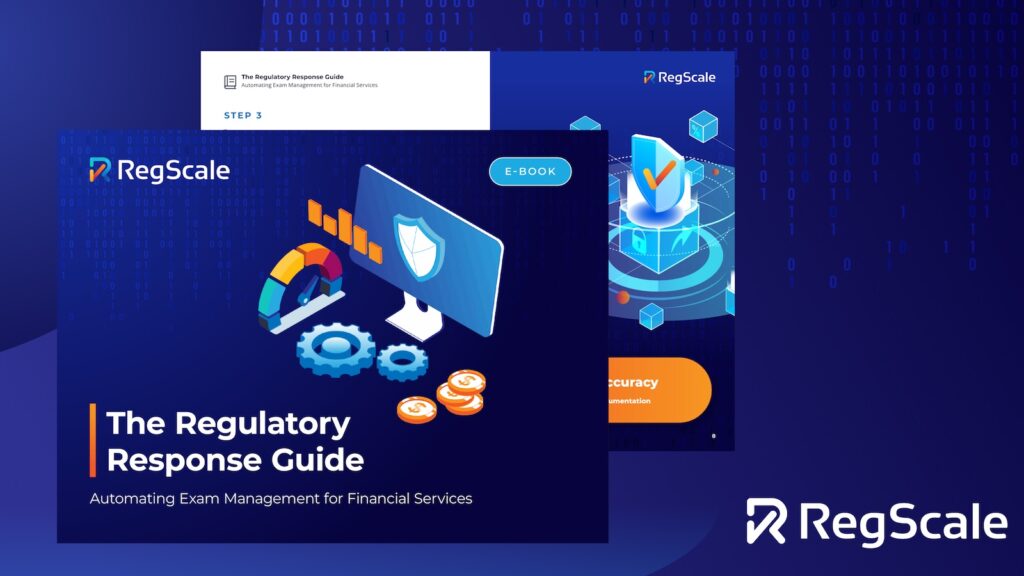Science Stymied by Spreadsheets? Modernizing DOE Compliance

The National Laboratories of the Department of Energy stand at the forefront of scientific innovation, tackling complex challenges and advancing research across the world. But behind these groundbreaking discoveries lies a less glamorous reality: the overwhelming number of compliance processes that haven’t evolved at the same pace as the science they support.
Across the DOE (not to mention other federal agencies and the private sector), we see the same pattern: GRC teams drowning in spreadsheets, siloed departments managing disconnected compliance activities, and highly skilled professionals spending countless hours on manual documentation rather than their core mission. Many labs operate with just a handful of staff managing thousands of controls across multiple systems and sub-systems, creating a stark contrast between their cutting-edge scientific research and outdated governance processes.
The truth is, most labs remain tethered to spreadsheets and manual data entry as their primary GRC tool. Even labs that have invested in dedicated GRC platforms often find themselves reverting to spreadsheets due to implementation or usability challenges.
These spreadsheet limitations are compounded by organizational silos, with teams responsible for SSPs operating separately from those managing POA&Ms, which in turn are separate from risk management. The result is a paradoxical situation where institutions at the forefront of computational science and automation are stuck with disconnected workflows and manual, error-prone processes.
Solving these problems is about more than just efficiency. It’s about finding solutions that allow our National Labs to focus on what they do best: advancing the frontiers of science and addressing critical national challenges.
Transforming GRC with compliance as code
Compliance as code offers a way for organizations to move from static documentation to an always audit-ready state. At its core, the approach embeds compliance checks directly into CI/CD pipelines, allowing companies to continuously demonstrate compliance across their development lifecycle.
For National Labs, compliance as code enables automatic testing of controls, real-time visibility into compliance and risk posture, and automated evidence collection. It also significantly accelerates the development lifecycle, dramatically reducing time-to-capability for new technologies.
The foundation of compliance as code is OSCAL (the NIST Open Security Controls Assessment Language), which provides a standardized, machine-readable format for security controls. For organizations required to produce SSP exports and other documentation for DOE reporting, OSCAL offers a path to automation and unprecedented efficiency.
The elusive cATO
Compliance as code and automation support another critical piece of the GRC puzzle for National Labs: the shift from point-in-time authorizations to continuous Authority to Operate, or cATO.
ATO-related bottlenecks are common in the public sector, with traditional authorization approaches taking 12 to 18 months and costing at least tens of thousands of dollars. It’s a weighty burden for many agencies, and it significantly hampers mission effectiveness.
By shifting to Continuous Controls Monitoring, labs and other government agencies can dramatically accelerate the ATO process. Instead of point-in-time compliance checks and manual, 1- to 3-year control testing cycles, National Labs can leverage seamless monitoring and avoid the need for periodic re-authorizations.
With the RegScale platform, organizations can also use AI to dramatically reduce the time to ATO, including AI-enabled control authoring and auditing as well as automated evidence collection, SSP generation, and built-in workflows. By automating every stage of the ATO and RMF lifecycle, from control implementation to ongoing reporting, National Labs can cut through the complexity and reduce timelines from years to weeks.
Beyond manual risk analysis
When risk calculations rely on manual data entry and disconnected workbooks, it’s difficult to deliver the strategic insights needed for truly effective risk management. What’s more, the complex threat landscape facing the DOE demands comprehensive visibility that spreadsheets just can’t provide.
Modern risk automation platforms like RegScale’s deliver this visibility through intuitive, customized dashboards that provide a comprehensive view of the risk landscape across all systems. This allows GRC teams to map interconnected risks, reveal hidden dependencies, and convert risk scenarios into specific financial metrics.
Continuous monitoring takes it a step further, ensuring that risk assessments are based on the most accurate, up-to-date information rather than periodic snapshots that quickly become outdated. This enables labs to make better business decisions, transforming risk management from a compliance burden into a strategic planning tool.
Conclusion
As the first law of thermodynamics goes, it’s all about conserving energy — your GRC staff’s energy, that is. With the help of OSCAL, automation, AI, and compliance as code, your team can redirect valuable attention and resources from manual documentation to mission-critical work.
Luckily, moving from spreadsheet-driven compliance to automated, intelligent GRC doesn’t require a complete technological overhaul. Many labs can begin with targeted automation for their most resource-intensive processes, eliminating tedious tasks and gradually expanding their scope.
These aren’t theoretical concepts for the future; they’re practical solutions already being implemented across the public sector. It’s time to join the growing number of organizations balancing cutting-edge science with efficient, effective compliance.
Ready to get started?
Choose the path that is right for you!
Skip the line
My organization doesn’t have GRC tools yet and I am ready to start automating my compliance with continuous monitoring pipelines now.
Supercharge
My organization already has legacy compliance software, but I want to automate many of the manual processes that feed it.
